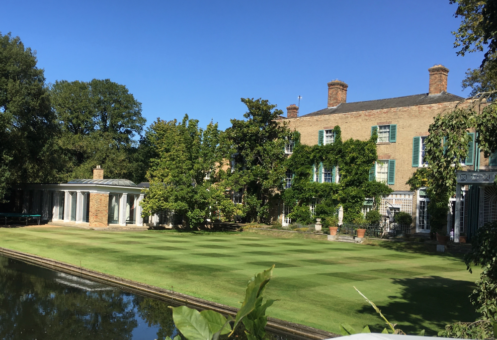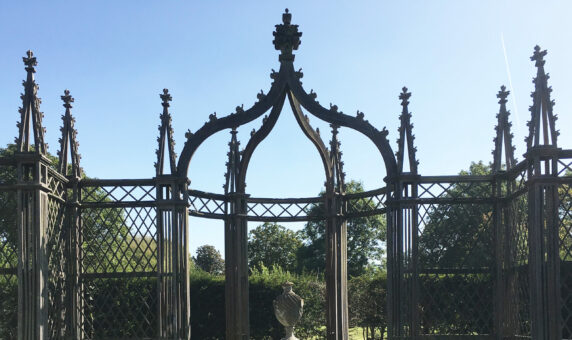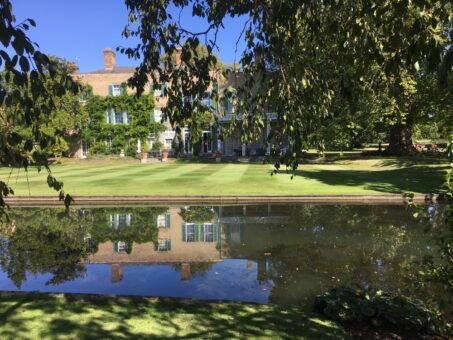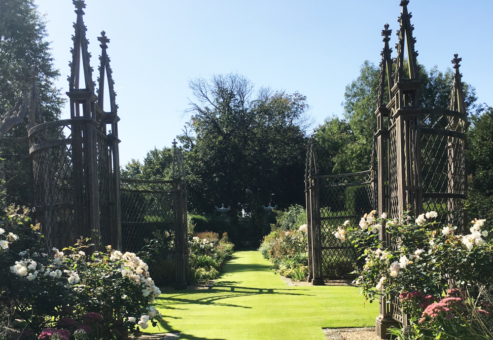Abbots Ripton Hall
Ancient site owned by the likes of Sir John St John, Oliver, Earl of Bolingbroke, and (an eighteenth century) Julius Caesar.
Huntingdon, Cambridgeshire, PE28 2PQ
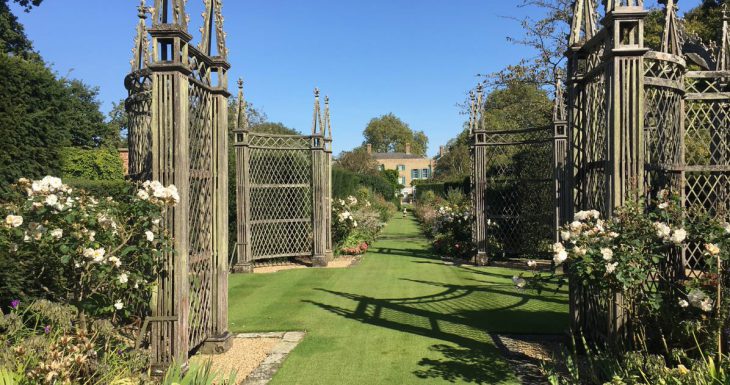
An 18th/19th century country house, set in eight acres of garden, including herbaceous borders, an old-fashioned rose circle, a Mediterranean grey border, rare trees, follies designed by Peter Foster, closely-mown lawns, a river and a five-acre lake.
The Hall gardens cover an area of 8.5 acres (3.4 hectares) surrounded by managed parkland and a five-acre (two-hectare) lake added in 1974. There are many fine old trees, large lawns, shrub, rose, herbaceous and grey borders, a bog garden as well as mixed borders. There are some six follies designed by Peter Foster around the garden including a gothic trellis in the herbaceous border and the Constable pavilion at the end of the lake. Mr Foster was the architect responsible for the maintenance of the fabric of Westminster Abbey.
Near to the house are large close-mown lawns and a huge London plane. Across the lawn are mixed white borders, shaded borders and a circular old-fashioned shrub-rose border. Many roses survive from the original planting although a regular replacement scheme is in practice. In this area there are also fine tree specimens including Metasequoia glyptostroboides and Betula papyrifera, as well as the bog garden. The river or ‘Bury Brook’ cuts the garden into two halves and is crossed by four bridges. Two old oak trees dated to around 1600 stand guard by the thatched summer house by the tennis court next to an old orchard underplanted with spring bulbs. This area also contains a young Wollemi pine, common in Australia 150 million years ago. Wollemia is a genus of coniferous tree in the family Araucariaceae and was only known through fossil records until the Australian species Wollemia nobilis was discovered in 1994, 150 kilometres north-west of Sydney. Following the mown paths leads to the tennis lawn now planted with some of Lord De Ramsey’s father’s favourite trees and the first planting of the oak collection.
Tour of the ground floor of the house led by a family member whenever possible, and a tour of the garden led by the head gardener.
Tours that are scheduled will be listed below. If none are scheduled yet, please check back later, or find other tours you might enjoy on our tours listing page here.
Visit by Private Tours only.

